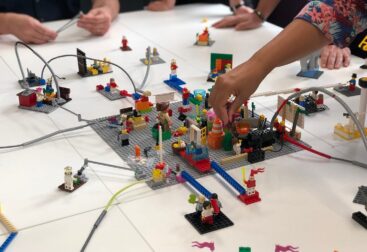The 30×30 challenge is the simplest framework for upskilling yourself and building better habits.
The 30×30 challenge is the simplest way of learning a new skill. I first learned about this framework in Sahil Bloom’s fantastic newsletter. I’ve since used it to learn several new fun and useful skills. Here is how you can do the same.
How it works
- Choose a skill/habit you want to have.
- Do (at least) 30 minutes of practice for 30 days in a row
- Repeat.
How to stick to it
- Set the time in advance and block it out in your calendar so no one disturbs your practice session.
- Use a commitment device: tell your friends and family you’re doing this or use a tool like Beeminder.
- Track your progress with a calendar — every box ticked makes the next one easier to tick. This free notion template is great.
- Make it fun! This challenge doesn’t have to be academic, one of my challenges was learning to solve a Rubik’s cube
Examples
- Touch Typing
- Blogging
- Creating websites
- Drawing
- Photography/Videography
- Cardio
- A language
Why it works
“The man who moves a mountain begins by carrying away small stones.” ― Confucius.
Builds a habit
The 30×30 challenge builds the foundations you need for a lifelong habit. It starts the magical process of compounding. If you really love what you’re doing you’re welcome to practice for an hour or even longer. You can also carry on after the month. I like to practice the skill once a week after the first month to keep it sharp. Muscle memory is fantastic, maintaining a skill requires far less effort than getting it in the first place.
The Pareto Principle

The Pareto Principle or 80/20 rule states that 80% of results, outputs, or rewards come from 20% of the causes, inputs, or efforts. Although not a rule as such, we see this effect everywhere. For example, 20% of criminals commit 80% of crimes or 20% of a company’s products represent 80% of sales.
We can use this effect to our advantage. Let’s say your goal is to learn a new language. Becoming perfectly fluent will take years but if you focus on just the most common conversational topics (20% of the whole language), you’ll know enough to partake in 80% of the conversations. In most areas, the first 80% of knowledge is low-hanging fruit. Of course, if you want to excel at something, you’ll have to work hard for that last 20%, but our goal is just to become competent.
One of my goals has always been to improve my writing skills. In October, I set writing as my 30×30 skill for the month and I started blogging. My writing has improved dramatically since then and I’ve carried on with the habit because I really enjoy the process. 30 minutes of writing a day felt easy and before I knew it, I had several completed articles.
Logarithmic growth curves

There are two types of growth curves: logarithmic and exponential. Exponential growth curves increase slowly in the beginning, but the gains increase rapidly and become easier as time goes on. For example: getting subscribers on a youtube channel or building your investments.
Logarithmic growth curves are found in skills where beginners get to a decent level of competence quickly but it gets harder to progress. Examples of this are weightlifting and language proficiency. By focusing your time on skills and habits which have a logarithmic growth curve, you can take advantage of the “beginner gains” to get to a good level of competence.
Conclusion
If you’ve always wanted to learn a skill or build a certain habit but have never managed to commit, look no further than the 30×30 challenge.







[…] Start small: Rather than trying to overhaul your entire life at once, start with small, achievable goals. For example, if your resolution is to exercise more, start by committing to a short, daily workout or taking a walk each day. […]